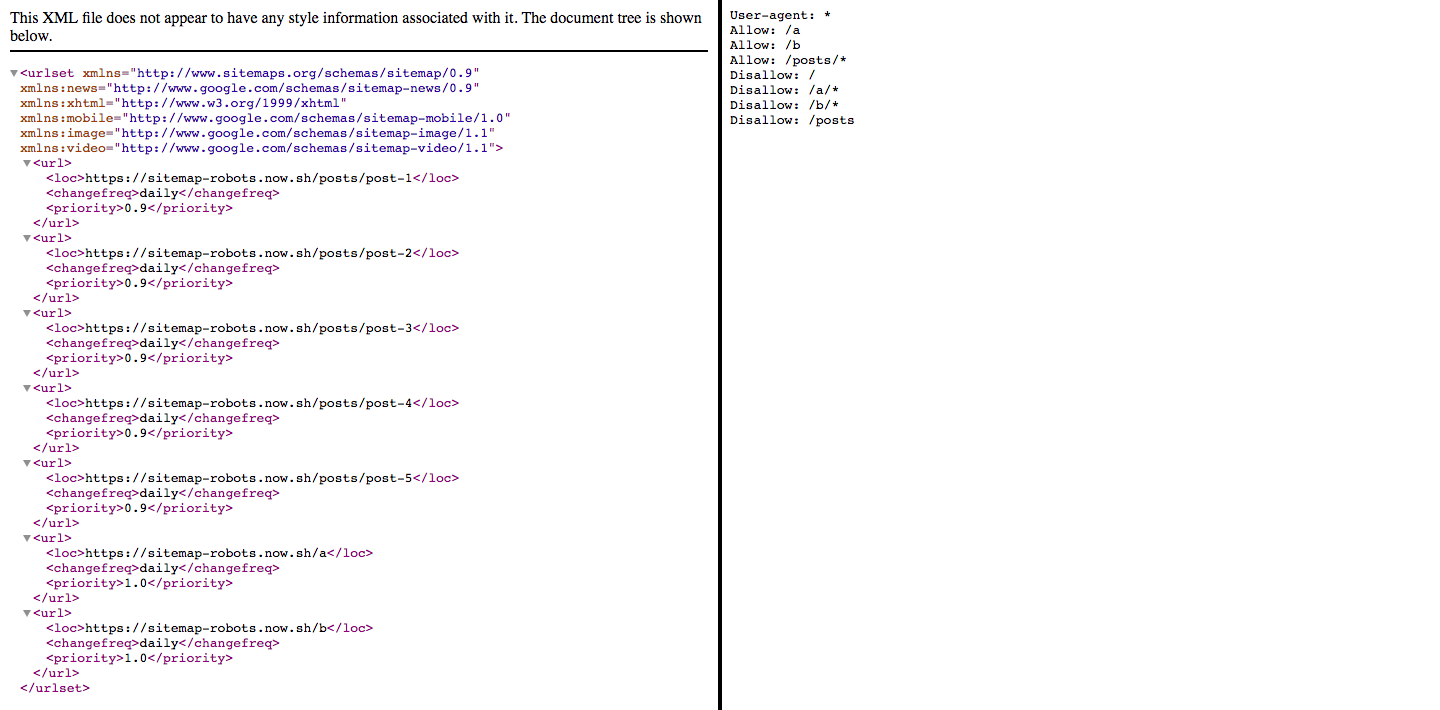This example app shows you how to set up sitemap.xml and robots.txt files for proper indexing by search engine bots.
The app is deployed at: https://sitemap-robots.now.sh. Open the page and click the links to see sitemap.xml and robots.txt. Here is a snapshot of these files, with sitemap.xml on the left and robots.txt on the right:

Execute create-next-app with npm or Yarn to bootstrap the example:
npm init next-app --example with-sitemap-and-robots-express-server with-sitemap-and-robots-express-server-app
# or
yarn create next-app --example with-sitemap-and-robots-express-server with-sitemap-and-robots-express-server-appDownload the example:
curl https://codeload.github.com/zeit/next.js/tar.gz/canary | tar -xz --strip=2 next.js-canary/examples/with-sitemap-and-robots-express-server
cd with-sitemap-and-robots-express-serverInstall it and run:
npm install
npm run start
# or
yarn
yarn startDeploy it to the cloud with now (download)
now- routes
/aand/bare added to sitemap manually - routes that start with
/postsare added automatically to sitemap; the current example creates an array of posts (seeserver/posts.js), but in a production-level web app, you would want to updatesitemap.xmldynamically by getting posts from a database:- see this app in which posts are fetched from a database
When you start this example locally:
- your app with run at https://localhost:8000
- sitemap.xml will be located at http://localhost:8000/sitemap.xml
- robots.txt will be located at http://localhost:8000/robots.txt
In case you want to deploy this example, replace the URL in the following locations with your own domain:
hostnameinserver/sitemap.jsROOT_URLinserver/app.jsSitemapat the bottom ofrobots.txtaliasinnow.json
Deploy with now or with yarn now if you specified alias in now.json